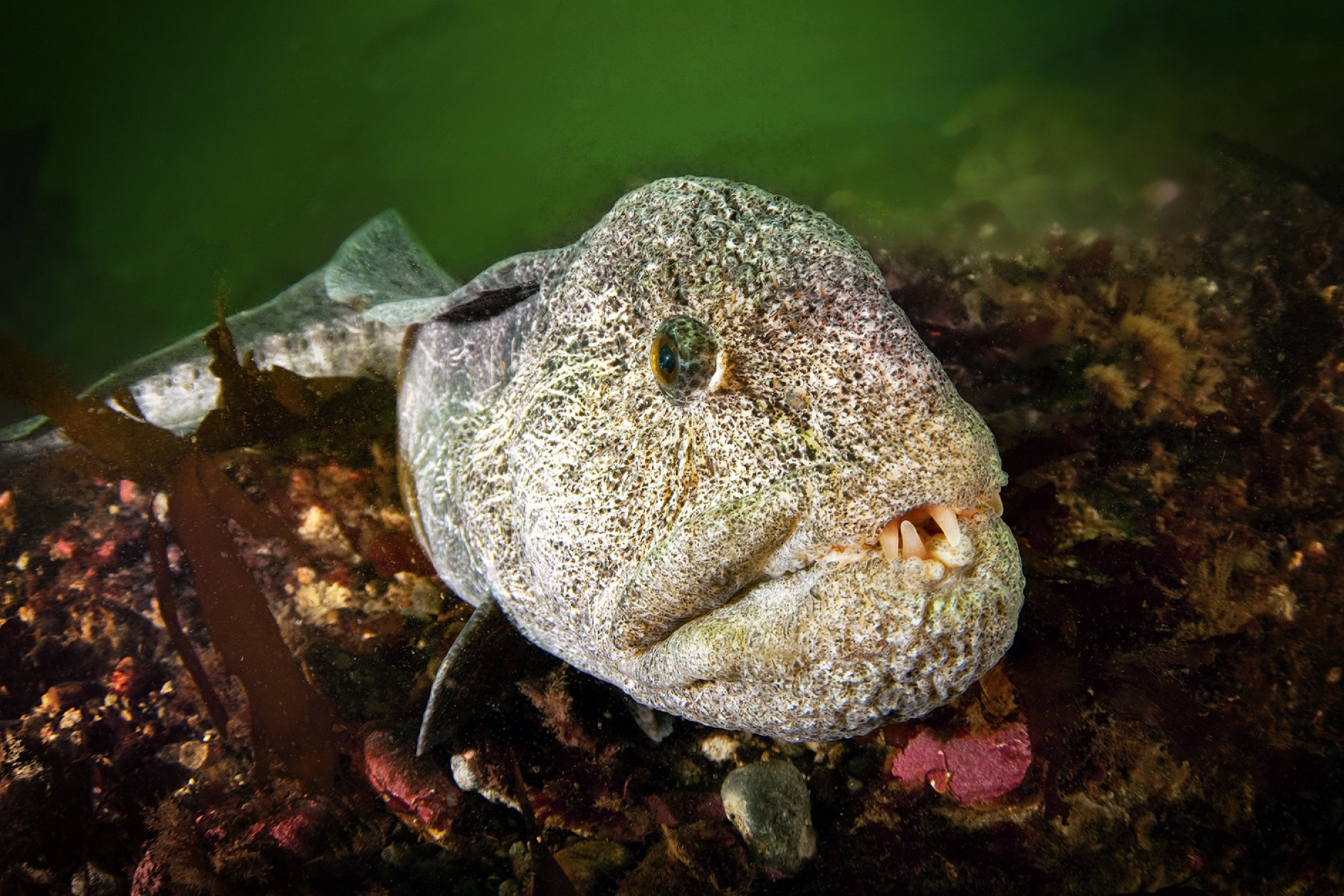Wolf Eel
The “eel“ that is not really an eel
The wolf eel is not an eel at all but one of five “wolffish“ species, having paired gill slits and pectoral fins. These long, skinny fish can grow quite large, reaching up to 2.5m (8.2 ft) long. These coldwater marine fish can be found hiding in the caves, crevices, and rocky reefs along North America’s Pacific coast, from Baja California, Mexico north to Kodiak Island, Alaska. You can also find wolf eels on the east coast of Russia and south to the Sea of Japan.
This fascinating species is touted as one of the ugliest fish in the sea. They are clearly distinguishable by their round, blunt heads, protruding lower jaw, and menacing-looking teeth. Wolf eels have extremely powerful jaws and love to eat hard-shelled animals like sea urchins, crabs, and sand dollars. Unique to the fish world, wolf eels mate for life, and the monogamous pair can usually be found hiding in their den together. To find out where you can see wolf eels on your next dive, explore the dive site map below!
Dive Sites with this Animal View more on map

★★★★★ USAT Liberty Wreck
This is the only historical shipwreck in Bali, ranked #3 in the world for Wreck diving! The wreck is 25 meters form shore at a depth of 4 to 29 meters below the surface with most of it occuring in a shallow area. This dive site does not have strong currents, has clear water, and warm temperatures. Difficult entry!

★★★★★ Koh Bida Nok
This is one our favourite dive sites since it has the widest range of wildlife. The reef gently slopes down from the island apart from the wall at the south west which drops 22-26 meters.

★★★★★ Malong Bay/Turtle Rock
On the West side of Phi Phi Leh , north of Maya Bay, there is the bay of Malong, a frequented dive site between December and May, only dived occasionally during the Monsoon season.

★★★★★ Pileh Wall 1
Pileh Wall, on Phi Phi Leh, is a vibrant wall dive dropping to 20m. It’s renowned for colorful soft corals, gorgonian fans, and offers encounters with blacktip reef sharks in shallower areas. You’ll also find various reef fish, moray eels, and possibly turtles. Perfect for all dive levels.
